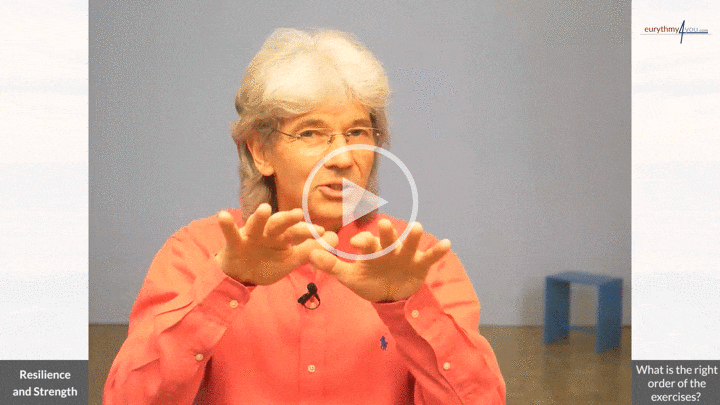Current Lesson
Course Content
Course Content
-
0 / 4
Introductory Texts
-
0 / 14
Questions and Practice Tips
-
Composition of the exercises1:49

-
Order of the exercises1:23

-
What is the right order of the exercises?2:26

-
How often shall I practice?2:56

-
Three types of pauses3:20

-
The rhythmic system1:49

-
Why do I have to feel my muscles?3:10

-
Does yawning distract from the exercise?1:24

-
Is starting physically ok?2:11

-
How to practice in front of your computer?1:16

-
Does Theodor move and speak too slowly?2:26

-
Should the feet be together? Can we practice outside?1:54

-
Closed or open eyes?2:31

-
Can an exercise create anxiety in one’s chest?3:06

-
-
0 / 7
Yes and No
-
Where does Yes and No originate?0:55

-
Why do I return in a straight line?2:02

-
When do I inhale and exhale?1:43

-
Does my weight rest on both feet equally?1:23

-
Do the feet touch the floor?1:43

-
Do I speak the words Yes and No?1:18

-
Can the legs be changed?1:40

-
-
0 / 11
Sympathy and Antipathy
-
What this exercise is about2:04

-
Why the left leg is the supporting one2:03

-
Where do I put the chair? What are the hands doing?2:08

-
Why don't we switch legs for Sympathy and Antipathy?2:52

-
Why do we move the leg so slowly2:56

-
Why do I feel antipathy when doing Sympathy2:54

-
My legs wobble the whole time2:05

-
How do the streams move in antipathy?3:05

-
Is the foot dragging on the floor? Do you always pause halfway through?2:16

-
Do I place my foot completely?1:41

-
Antipathy's relation to the Ei-gesture3:55

-
-
0 / 7
Love and E
-
What do the feet do1:28

-
Why do I want to rest in the middle of the sequence2:50

-
The big E-gesture and the Love-gesture1:13

-
Love and E The culmination of the five exercises2:18

-
How to get from the Love to the E-gesture0:48

-
How slow should the Love-gesture be?1:18

-
Do I feel the O when I do Love?2:17

-
-
0 / 4
Hope and U
-
Why do I turn the hands for U?1:24

-
How straight are the knees?1:09

-
Do you speak the sound U?1:25

-
Are the toes lifted up all the time?3:33

-
-
0 / 1
A-H and Reverence
-
How do I activate the reverence stream?2:12

-
-
0 / 3
Additional Material
How the five exercises work
 The 5 exercises were given by Rudolf Steiner to the eurythmist Elena Zuccoli (1901-1996) in this order:*
The 5 exercises were given by Rudolf Steiner to the eurythmist Elena Zuccoli (1901-1996) in this order:*
Yes and No
Sympathy and Antipathy
Love and E
Hope and U
A-H and Reverence
In all five exercises, two polar aspects are united. The force that makes it possible to unite them is the I, which is active in the will and at the same time maintains the uprightness, as in the two serpents around the axis of the staff of Mercury.
Influenza is to be considered from the point of view of metamorphosis. This applies to the various forms of the influenza virus and also to the coronavirus. That is why the social aspect must be taken into account in the treatment of influenza. This requires threefold remedies. This is exactly the case with these five exercises: two polar aspects and the power to unite them.
The five exercises appeal to the inner human forces of faith, love and hope.**
The final exercise A-H and Reverence expresses a moral attitude based on the idea of sacrifice: The A is a gesture of opening and without inner mastery would correspond to a situation of losing oneself. Such self-dissolution seems to be directly related to the way in which infection by the virus occurs. The A-H and reverence exercise, on the other hand, is about a moral attitude.
Elaboration based on an email correspondence with Dr Gérard Savournin, Lausanne, March 2020.
* Information from a student of Mrs Zuccoli to Dr Gérard Savournin, 1996.
** Compare the two lectures by Rudolf Steiner: Faith, Love, Hope, 2 and 3 December 1911, GA 130.







